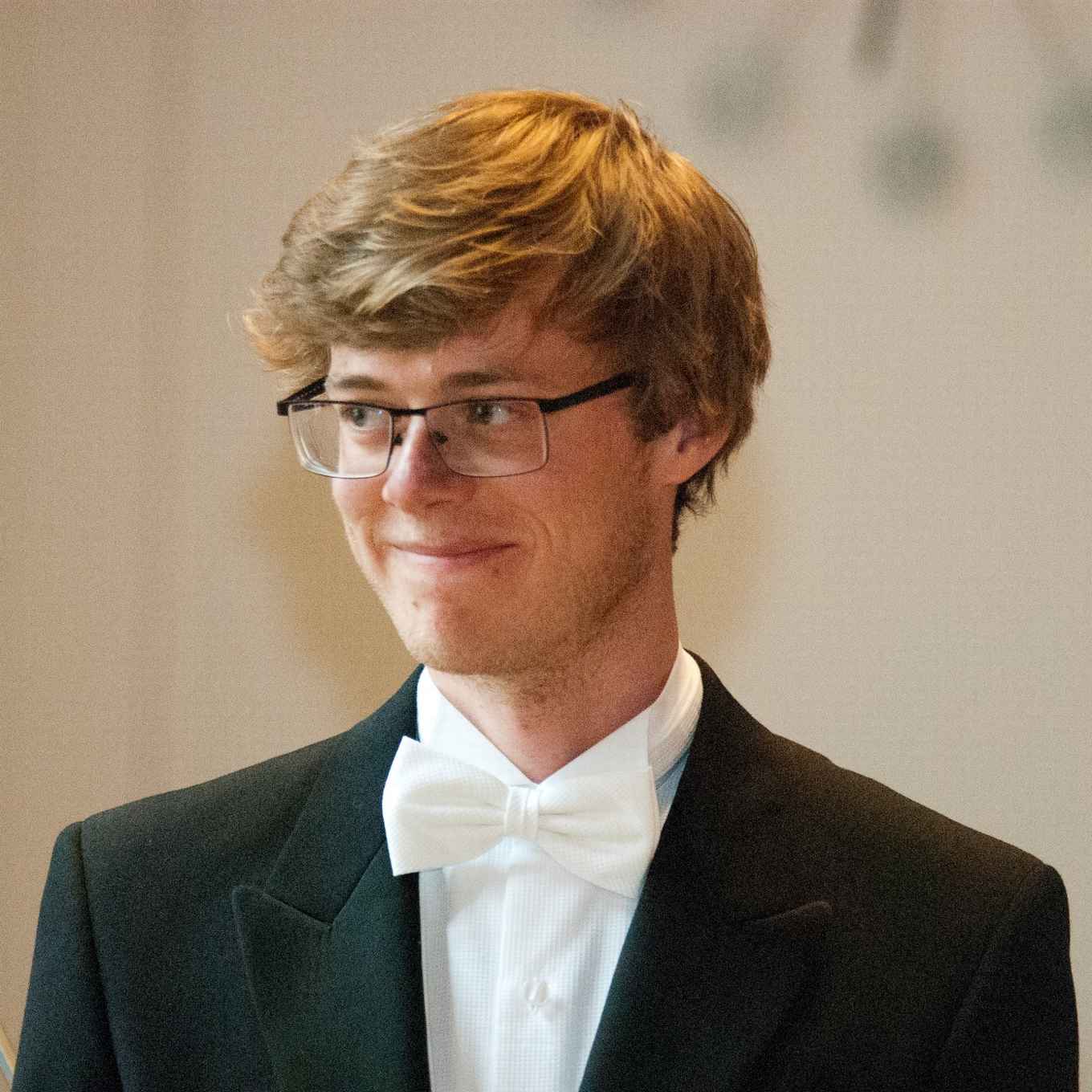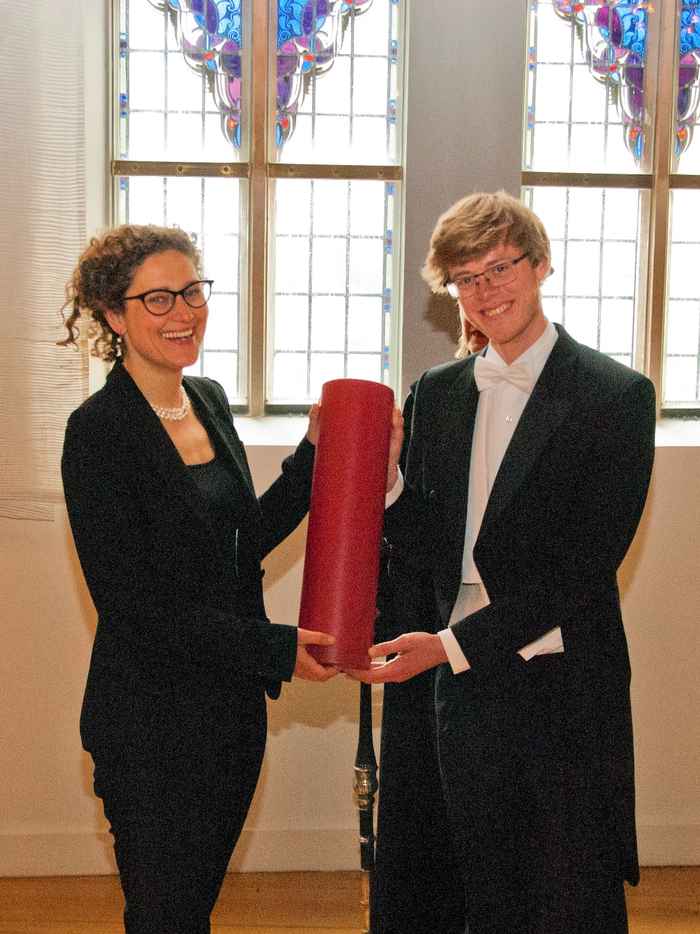Chemistry PhD student Joen Hermans graduates cum laude
11 May 2017

Hermans has studied in detail the formation of metal soaps, which is an important aspect of the degradation of the paint in historic artworks. One of the things he discovered was that the process that causes metal ions to move in the painting is crucial to the speed at which the painting ages.

Hermans also managed to recreate the molecular structure of old oil paints and used this information for simulations enabling the study of the behaviour of old paints without actually having to remove samples, for example from Rembrandt’s Night Watch. Hermans hopes this knowledge will contribute towards a solid foundation for the conservation of valuable works of art.
Postdoc
Rijksmuseum, already collaborating in his PhD research, has offered Hermans a postdoc position, allowing him to continue his research in the direction of 2D Infrared Spectroscopy of metal coordination in oil paints under supervision of professor Sander Woutersen of Molecular Spectroscopy.
Joen Hermans studied chemistry at Utrecht University where he graduated 'Cum Laude' in 2012 on his master’s thesis ‘Cluster formation in deionized dispersions of hollow silica tubes’. He performed an internship at Delft University of Technology where he developed a molecular non-equilibrium self-assembling system based on nicotinamide reduction. Directly after obtaining his Master's title Hermans joined the group of professor Piet Iedema at the University of Amsterdam's Van 't Hoff Institute for Molecular Sciences, who leads the NWO ‘Science4Arts’ project ‘Paint Alterations in Time’ (PAinT).
Earlier this year Joen Hermans succesfully participated in the Amsterdam heat of FameLab, an international competition in science communication for young scientists. He made it to the national finals.